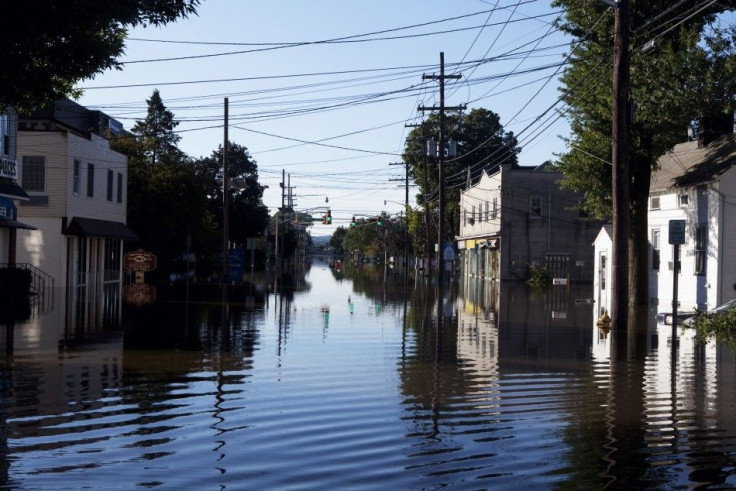East Coast Battling Irene After Effects; Katia Nearing Hurricane Strength, Path Uncertain

While parts of the East Coast hard-hit by Hurricane Irene manage the damage and despair in Connecticut, New Jersey and Vermont another storm is cranking up in the Atlantic -- Tropical Storm Katia, likely to become Hurricane Katia later Wednesday, according to the National Hurricane Center.
The threat of Katia comes just days after Irene battered the Caribbean and the U.S. It's too early to tell if Katia will also hit the U.S.
Katia is about 985 miles from the southern Cape Verde Islands, with winds of 65 mph. The storm is moving fast, at 21 mph, and heading west-northwest, the center said in a 5 a.m. EDT advisory. If Katia remains on its current track, the storm will move northeast of Puerto Rico by Sunday, when it could reach major hurricane status with winds of 110 mph.
Katia is the 11th named storm of the Atlantic hurricane season which runs from June 1 to Nov. 30. Irene became the first to reach hurricane strength, before ravaging a path up the East Coast last week.
New York took a took hit from Irene at tropical storm strength but America's largest city was mostly spared considering what some forecasters had suggested. Other areas are still reeling from Irene's devastating impact, days after the storm departed. In Vermont, emergency airlift operations brought ready-to-eat meals and water to residents isolated and in need of rations after Irene.
Hundreds of roads and bridges are wiped out or severely damaged in Vermont after eight inches and more of rainfall fell in a short period of time. Irene caused massive flooding that has crippled the state. More than 2.5 million people remained without power along the East Coast, and New Jersey ordered new evacuations as the Passaic River in the northeastern part of the state crested, causing extensive flooding.
Rescues were necessary in Paterson, N.J., the state's third-largest city.
Gov. Chris Christie toured Wayne on Tuesday, near the Passaic, calling what he saw extraordinary despair.
Gloria Moses told The Associated Press, as she gathered with others at the edge of what used to be a network of streets now overflowed with water. Been in Paterson all my life, I'm 62 years old, and I've never seen anything like this.
The Connecticut River was 23 feet above flood stage on Tuesday, and rising.
While in Vermont, virtually crippled from Irene, officials were providing basic necessities to residents who have no power, telephone service or ways to leave their home. Food and water has become the basic form of rescue since there are too many to evacuate.
Some 11 Vermont towns remained Tuesday totally cut off from the outside world due to flooded and damaged roads and bridges, including Cavendish, Granville, Hancock, Killington, Mendon, Marlboro, Pittsfield, Plymouth, Stockbridge, Strafford and Wardsboro.
Hurricane forecasters have been following Katia since Saturday when it emerged then-unnamed as a large area of showers and thunderstorms off the west coast of Africa. The storm became better organized on Sunday and Monday, when it became a tropical depression.
Early forecast models show Hurricane Katia isn't expected to hit the U.S., while perhaps striking in the Caribbean, but some experts say it's far too early to know. Ruling out a strike on the U.S. from Hurricane Katia at this point would be a mistake, according to Weather Underground founder Jeff Masters.
The long-term fate of Katia is unknown, Masters, a hurricane expert, said in a post on his blog.
He said in daily commentary that uncertainty is prominent in the storm's forecast. Models don't suggest that Florida is in the picture, but anything could happen from among many possible scenarios.
© Copyright IBTimes 2024. All rights reserved.





















